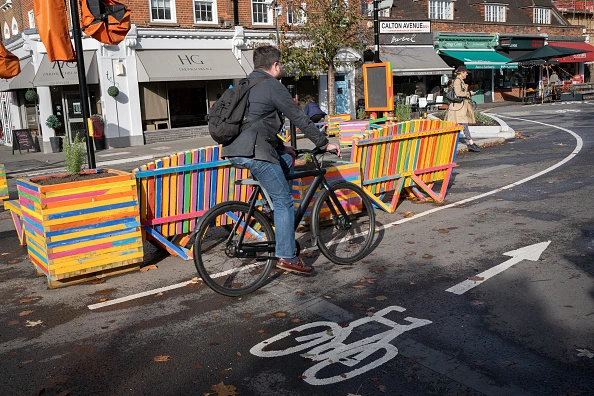
The London Healthy Streets Coalition annually publishes a scorecard, evaluating boroughs based on six key measures known to reduce car usage and promote active travel. These measures include the implementation of low-traffic neighbourhoods (LTNs), 20mph speed limits, controlled parking, bus priority, protected cycle lanes, and safe ‘School Streets‘. These initiatives have a significant and immediate impact on residents’ health and well-being.

The Healthy Streets Scorecard for 2023 has revealed the top-performing boroughs in various categories. The City of London has been recognised as the overall winner, leading the way in delivering schemes that prioritise walking, cycling and public transport, while actively reducing car usage.
Islington has been named the top-scoring inner London borough, excelling in implementing 20mph speed limits, bus priority measures, LTNs, and controlled parking. Waltham Forest, renowned for its LTNs and cycle routes, has emerged as the top outer London borough, surpassing some inner London boroughs in its commitment to promoting healthy streets.
London’s healthy streets
These boroughs are successfully encouraging residents to shift from cars to more sustainable modes of transportation. The awards highlight the significance of promoting physical activity to combat the high rates of obesity and related health issues in the city.
The coalition also analyzes the data in relation to housing density to provide a more accurate assessment of boroughs’ performance. Camden, an inner London borough, has consistently outperformed expectations when adjusted for housing density, while Richmond, an outer London borough, has demonstrated exceptional progress compared with similar low-density areas in terms of implementing Healthy Streets measures, according to the media release.
In addition to recognising boroughs, the coalition has introduced new mapping and scoring systems for the 2023 Scorecard. The mapping now includes Controlled Parking Zones, providing improved data on this metric. The scoring system incorporates the concept of “opportunity to park”, considering the size of parking zones and their impact on encouraging sustainable transportation options.
The Scorecard results also shed light on several key indicators. Some boroughs continue to lag in implementing crucial measures. For example, there is significant variation in the coverage of 20mph speed limits, with certain boroughs having less than 10% of appropriate streets designated as safe zones.
London has yet to meet its target for reducing road casualties, particularly for pedestrians and motorcyclists. The data also shows a decline in car ownership in the city, while the proportion of electric vehicles is slowly increasing.
Prominent figures in the field of public health and transportation have emphasized the importance of prioritizing active travel and reducing car usage to improve overall health outcomes. They urge boroughs to accelerate their efforts and implement sustainable measures without delay.
[Read more: Reimagining a pedestrianised London]






